It is not quite clear what you mean by
maintain the sequence of the items in the temporary table
, but if you want to get result ordered by eserial, then you have to add ORDER BY eserial to your query. Without ORDER BY the resulting rows can be returned in any order. This applies to any method that you choose.
So, taking your last query as a basis, it will look like this:
Select
lst.eserial
,lst.refdate
,app.CREATEDDATETIME
From
#mylist lst
Outer Apply
(
Select Top 1 rec.CREATEDDATETIME
From TableSource rec
Where lst.eserial=rec.ESERIAL And rec.CREATEDDATETIME<lst.refdate
Order By rec.CREATEDDATETIME Desc
) As app
ORDER BY lst.eserial;
To make it work fast and efficiently add an index to TableSource on (ESERIAL, CREATEDDATETIME). Order of columns in the index is important.
It is also important to know if there are any other columns that you use in OUTER APPLY query and how you use them. You mentioned column AREAID in the first variant in the question, but not in the last variant. If you do have more columns, then clearly show how you intend to use them, because the correct index would depend on it. The index on (ESERIAL, CREATEDDATETIME) is enough for the query I wrote above, but if you have more columns a different index may be required.
It would also help optimizer if you defined your temp table with a PRIMARY KEY:
Create Table #mylist
(
eserial nvarchar(35) Collate SQL_Latin1_General_CP850_CI_AS PRIMARY KEY,
refdate datetime
)
Primary key would create a unique clustered index.
One more important note. What is the type and collation of columns ESERIAL and CREATEDDATETIME in the main TableSource table? Make sure that types and collation of columns in your temp table matches the main TableSource table. If the type is different (varchar vs. nvarchar or datetime vs. date) or collation is different index may not be used => it will be slow.
Edit
You use the phrase "same sequence as the temp table" several times in the question, but it is not really clear what you mean by it. Your sample data doesn't help to resolve the ambiguity. The column name eserial also adds to the confusion. I can see two possible meanings:
- Return rows from temp table ordered by values in
eserial column.
- Return rows from temp table in the same order as they were inserted.
My original answer implies (1): it returns rows from temp table ordered by values in eserial column.
If you want to preserve the order of rows as they were inserted into the table, you need to explicitly remember this order somehow. The easiest method is to add an IDENTITY column to the temp table and later order by this column. Like this:
Create Table #mylist
(
ID int IDENTITY PRIMARY KEY,
eserial nvarchar(35) Collate SQL_Latin1_General_CP850_CI_AS,
refdate datetime
)
And in the final query use ORDER BY lst.ID.
